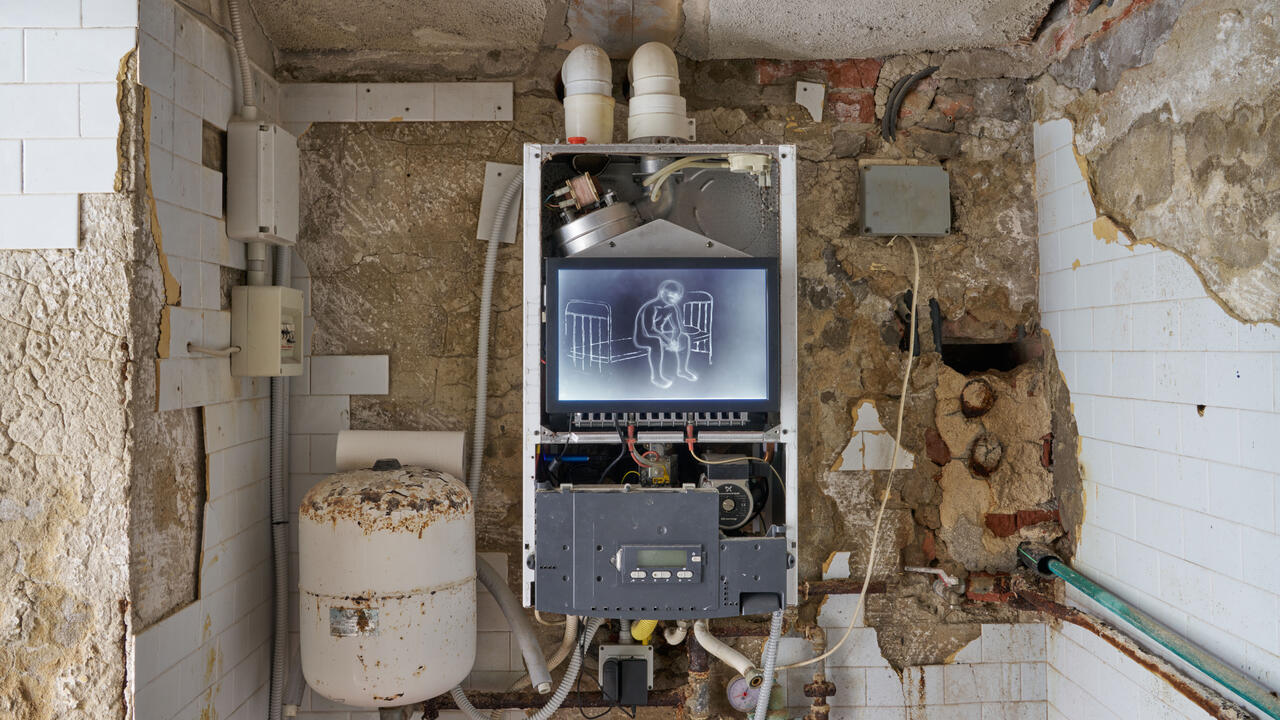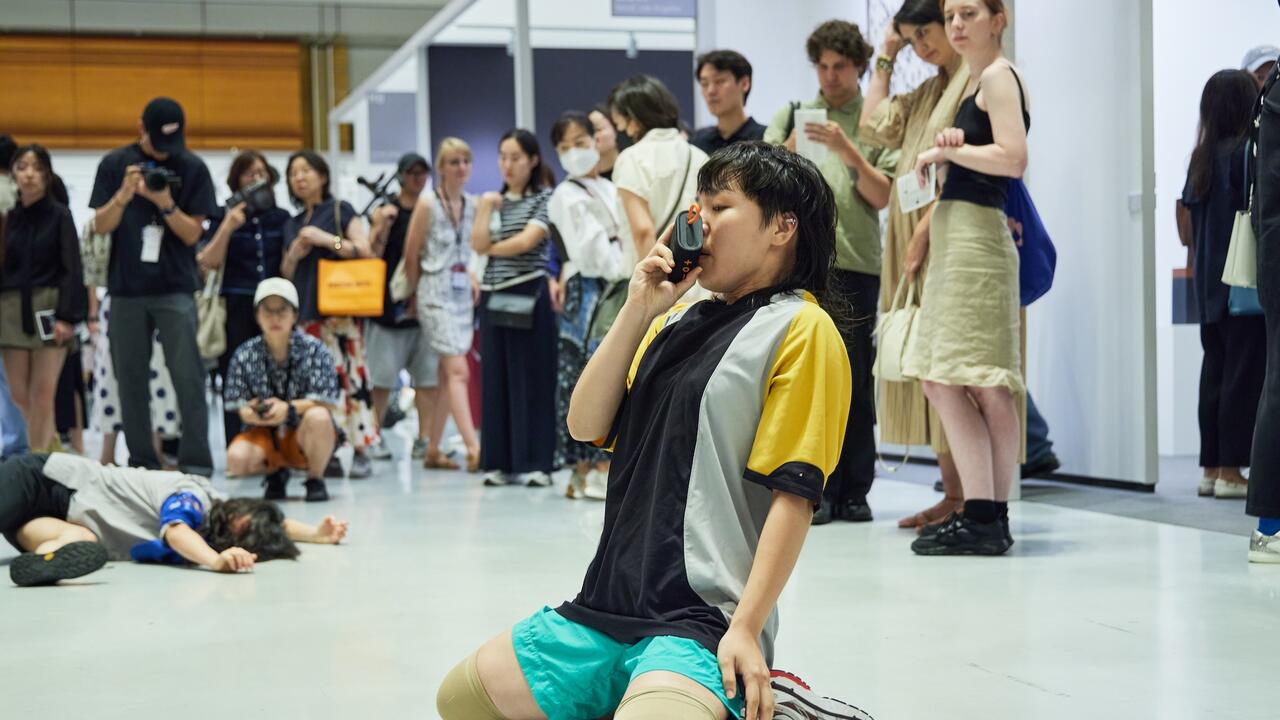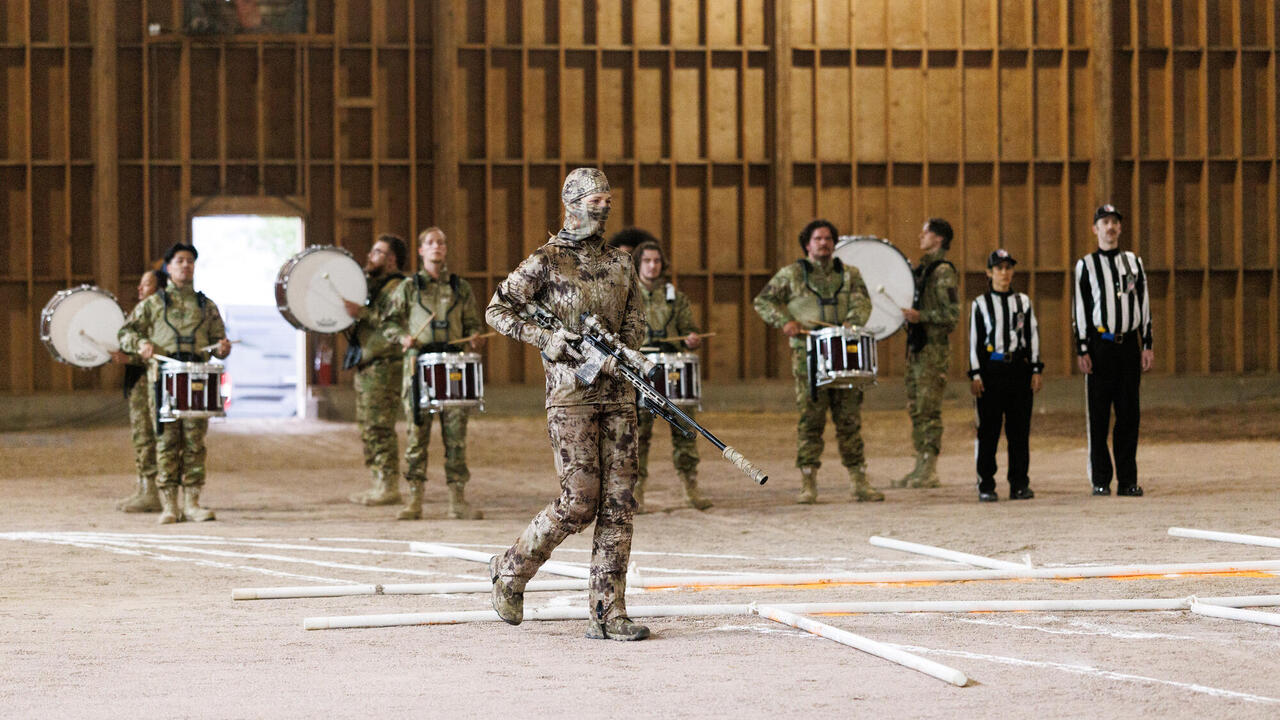Linder Sets Out to Titillate and Terrorize
A personal reflection on the artist’s feminist photomontages and their enduring impact ahead of a retrospective at the Hayward Gallery
A personal reflection on the artist’s feminist photomontages and their enduring impact ahead of a retrospective at the Hayward Gallery

In 2010, two historically significant events occurred within two months of each other: I graduated from art school with an unimpressive 2:1 grade, and Lady Gaga appeared on the red carpet of MTV’s Video Music Awards wearing a dress made of meat. At the time, I remember being thoroughly unimpressed – in a snobby, art hipster sort of way – with Gaga’s various attempts at performative freakiness. I had also seen her, once, at London’s Groucho Club wearing a dress with mad shoulders, bumping into other patrons rather than deigning to remove her dark sunglasses, and that image had, I think, destroyed my ability to think of her as cool. Above all else, however, I did not see her meat dress as wild because I knew – being an interminable, snobby art hipster – that the idea was not new.

In 1982, the artist Linder Sterling, often simply known as Linder, performed with her post-punk band Ludus at Manchester’s famed Haçienda club in a corset made of meat: not marbled steak à la Gaga, but gore-dripping giblets – as if she had not merely been stripped of her skin, but cut open and turned fully inside out. ‘For the last song’, the artist later recalled per a paper by the feminist academic Sarah Feinstein, ‘I triumphantly removed my skirt … to reveal not myself, but the black dildo which I was wearing beneath it.’ Linder’s performance was a protest against the venue’s routine screenings of pornography, and while attitudes to such material have changed with the development of new feminist waves, there is still an inherent thrill in the swaggering aggression of her gesture, and in its acknowledgement of the female body as a site of both pleasure and revulsion. It was not anti-sex, but anti-objectification, and the presence of that dildo seemed to say: You can want to fuck me, but I reserve the right to say, ‘Fuck you!’ And I reserve the right to actually fuck you back, too.
Linder acknowledges the female body as a site of pleasure and revulsion.
‘Our generation always acknowledged our influences,’ Linder told The Guardian in 2014, when asked whether it irritated her that Lady Gaga had not once mentioned her name in connection with the dress. ‘That does not seem to happen so much anymore. You have to do it, though, otherwise people don’t go on the great journey of discovery that impelled [them] to become [artists].’ Allow me, in that case, to acknowledge my own influences, and to mention the journey of discovery that led me – a profoundly mediocre artist who has made absolutely no art since graduating – to enrol in art school in the first place. I was following in the footsteps of women like Linder, Jenny Holzer, Sarah Lucas, Carolee Schneemann and Hannah Wilke, or any number of female artists whose piquant combination of sexual explicitness, sultriness, grimness and rage appealed to me on a bone-deep level. It has been strange, I am sure, to be a teenage girl in any era. Being a straight, white, middle-class teenage girl raised in the British suburbs post-millennium is, I presume we can all agree, playing the game in its very easiest mode.

Nevertheless, the 2000s had their own specific brand of weirdness to negotiate vis-à-vis femininity and self-image. ‘The dichotomous sexual world of the 1960s – before tans, gyms and irony – shaped those who, like myself, grew to adolescence through its murk,’ Linder told Interview magazine in 2010. So, too, the very-noughties world of tans, gyms, hairlessness, size-zero mania, illegally purchased Clenbuterol, and the dichotomy of being told that the pursuit of these things was now a form of empowerment because we, the ‘girlies’, were doing it for ourselves. I did want to be hot. I did care about fashion. I was also angry, sick of being hungry and not particularly interested in minimizing my intelligence in order to please men. I wanted to find a way for these contradictory things to coexist in my mind and my body without driving myself to distraction.

Born in Liverpool in 1954, Linder – née Linda Mulvey – is perhaps best known for having created the artwork for Buzzcocks’ 1977 single ‘Orgasm Addict’, which depicts the lithe, naked body of a woman whose nipples have been slyly replaced with a pair of smiling mouths, and whose head is an iron. As an image, it is a perfect introduction to the artist’s work: a primal scream of anti-domestic, anti-patriarchal rage combined with a pornographic moan of feminine pleasure, designed to titillate and terrorize in one fell swoop. Photomontage – a medium that allows the artist to steal directly from mainstream sources for the purposes of countercultural subversion, as seen in the works of Hannah Höch and, later, Martha Rosler – lends itself fairly seamlessly to the creation of feminist art. It can make the familiar newly unfamiliar, even surreal, and Linder’s merging of female figures and domestic machines, of pornography and flowers, ably expressed the unmooring, vaguely hallucinatory quality inherent in occupying the world as a woman and being asked to embody several contradictory states at once: prettiness and filthiness, wifeliness and wantonness, an almost mechanized functionality in both the bedroom and the kitchen.

If punk was a rejection of the status quo, it followed that being female and punk ought to mean a rejection of traditional heterosexual values. Although by the time I was entering adulthood there were, thank god, a far wider range of options available for women than there had been in ‘the dichotomous sexual world of the 1960s’, I still very much took Linder’s point. I liked how unafraid she was to voice that ‘Fuck you!’ and to flash the dildo hidden underneath her skirt. I liked, too, that she was very glamorous. If this seems a shallow observation, perhaps it is. Nonetheless, I maintain that there is something powerful, and subversive about a woman who is capable of caring about style and substance, embodying beauty and expressing a beastly kind of anger. She achieved the magic trick of being cool in the music world and cool in the art world, and still being able to do photoshoots for fashion magazines without ruining her street cred. In 2010, she undertook The Darktown Cakewalk, a 13-hour durational performance piece – arguably the most alienating format possible – for which she and her dancers were costumed by the high-end British designer Richard Nicoll. The day after the performance, Linder shot the film Forgetful Green (2010), in which the same performers ripped off their Nicoll outfits in the midsummer heat. What pissed-off, clothes-worshipping, art-loving woman would not want to walk the same precarious tightrope?

All of which is to say that it is partly Linder’s fault that, at the tail-end of my teens, I left for art college in London to spend three years shooting highly stylized female nudes, making photomontages, and occasionally splattering paint on things or setting fire to them. Although in the long run it was not the smartest career decision I made, I cannot say that I entirely regret it. ‘Artists make the worst critics,’ Linder said in Interview magazine in 2010. Conversely, it turns out that some critics make bad artists. Still, it occurs to me now that my criticism does owe a structural debt to all the spiky, magpie-like, feminist work that so inspired me in the earliest years of my adulthood: I am, after all, more often than not juxtaposing unexpected references or artefacts in order to elucidate something about either the culture or my own experience of life, and I am also prone to splicing, sometimes brashly, the mainstream and the subcultural, or the refined and the profane. It simply took a little longer for me to find my medium, and it turned out not to be re-appropriated porno magazines, or a dress made of meat, or the cut-out smile of a 1950s housewife, but the written word, and a blend of John Berger’s Ways of Seeing (1972) and Keeping Up with the Kardashians (2007–21). You have to snip a little, like a collage artist, from the work of the elders that you love, and then rearrange it in your own way, at once nodding to the source material while endeavouring to say something new.

Looking back at the moment in which I passed my snotty, youthful judgement on Lady Gaga’s supposedly transgressive credentials, I now realize that the two of us must have been roughly the same age, and although Gaga never did admit to being influenced by Linder, she was presumably cutting and pasting inspiration from her own preferred selection of cool, creative forebears. Perhaps, in hindsight, she feels a little embarrassed about bumping around with her sunglasses on at the bar of a Soho members’ club, too. ‘An artist is not hermetically sealed off from the world,’ Linder also said in that Guardian interview where she talked about Gaga and the meat dress, adding: ‘History, after all, is one big dressing-up box.’ Whether we reach into it and decide to pull out a silk designer gown or a handful of raw, bleeding giblets is entirely up to us – but why not both?
This article first appeared in frieze issue 248 with the headline ‘Titillate and Terrorize’
Linder’s ‘Danger Came Smiling’ will be on view at Hayward Gallery, London, from 11 February
Main image: Linder, Envy would praise his beauty (detail), 2020, photomontage, 31 × 51 cm. Courtesy: the artist, Andréhn-Schiptjenko and Modern Art, London
























